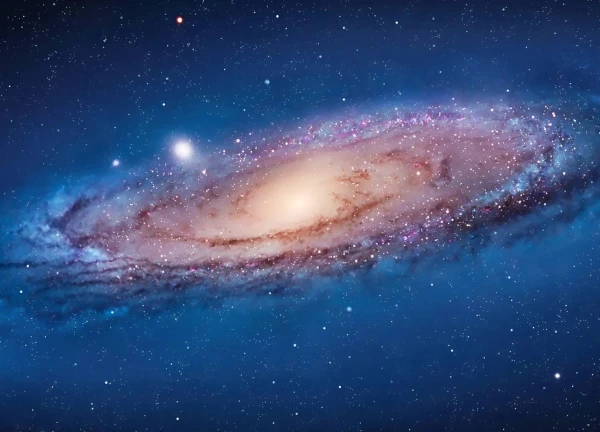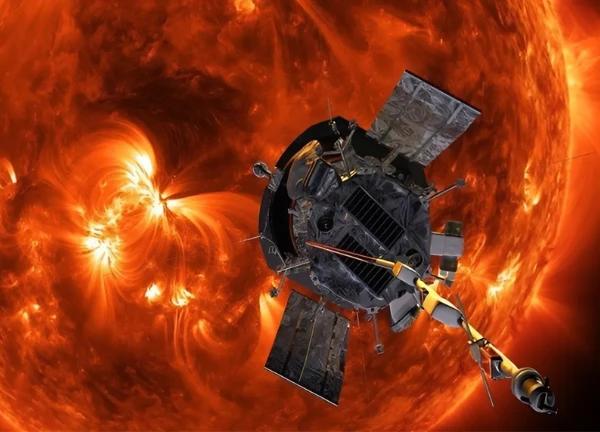Katy Perry harbored a 15-year ambition, spent 10 minutes flying into space, posted shocking news

3 | 0 Discuss | Share
A lone "wandering" black hole has just been discovered, not belonging to any star system. This shocking discovery challenges current understanding of black hole formation, dealing a slap in the face to the world of cosmology.
The discovery not only ends years of observation and debate, but also opens the door to a new journey in search of the most mysterious and elusive objects in the universe.
The peculiar object was first spotted by the team a few years ago as it quietly passed through the constellation Sagittarius. Initial data collected by the Hubble Space Telescope between 2011 and 2017 showed an unidentified “dark object†affecting the light of a distant star.
The phenomenon is the result of gravitational microlensing, a strange physical phenomenon in which light from a star is bent by the gravity of an object passing in front of it, much like the way a lens magnifies an image.
But when the team suggested that the culprit could be a black hole, they were met with pushback from another group of scientists who suggested it could be a neutron star, an object that is also extremely dense but has a smaller mass and is easier to observe.
However, all the controversy has now come to an end. In a new study published in the Astrophysical Journal , the original team used new observational data collected from the Hubble Telescope in 2021-2022 along with additional data from the Gaia space probe to re-examine the nature of the mysterious object.
Analysis results showed that this object has a mass about seven times that of the Sun, exceeding the maximum mass threshold of a neutron star, thereby eliminating the possibility that it is a neutron star and firmly confirming that it is a black hole.
It is worth noting that this is the first black hole discovered in a "lonely" state, meaning without any companion stars, completely different from previously discovered black holes, which usually reveal themselves through gravitational interactions with nearby stars, causing phenomena such as X-ray emission or changes in the star's orbit.
In this case, the black hole was only "seen" when it happened to pass by a distant star and warped the light coming from that star - a faint signal but enough for scientists to deduce its true nature.
"Analysis of the microlensing light curve and astronomical measurements led us, as well as other independent groups, to the conclusion that this object is an isolated stellar-mass black hole," the team wrote in a summary published with their study. "This is the first and currently only discovery of such a black hole."
In addition, a second team of researchers who had previously rejected the black hole hypothesis also reexamined their data in 2023 and came to the same conclusion. According to their analysis, the object had a mass six times that of the Sun, which, although with greater uncertainty, was still within the range of the original team's estimate.
This rare agreement between two independent research teams further increases the credibility of the discovery, and makes it a clear demonstration of the existence of black holes drifting in space, not attached to any stellar system.
This discovery is considered to be of great importance not only because of its uniqueness but also because it opens up a completely new channel in the study and detection of black holes.
Until now, astronomers have relied on auxiliary signals such as X-rays or gravitational waves to confirm the presence of black holes. But demonstrating that we can detect a black hole using microgravity alone confirms the effectiveness of microlensing, a tool that will play an increasingly important role in the exploration of dark objects in the universe.
From a scientific perspective, this is an achievement with lasting implications. If there is such a lone black hole, there may be countless others floating silently through the Milky Way and other galaxies, leaving no trace other than the effects of gravity.
Secrets of the universe: 55 stars fleeing, signaling an imminent galactic upheaval?  Dan Ny16:52:13 02/04/2025Recently, astronomers have detected 55 stars fleeing from the R136 cluster at supersonic speeds, 80 times the speed of sound on Earth. This strange phenomenon raises many questions about an imminent cosmic upheaval.
Dan Ny16:52:13 02/04/2025Recently, astronomers have detected 55 stars fleeing from the R136 cluster at supersonic speeds, 80 times the speed of sound on Earth. This strange phenomenon raises many questions about an imminent cosmic upheaval.

3 | 0 Discuss | Share

4 | 0 Discuss | Share

3 | 0 Discuss | Share

2 | 1 Discuss | Share

4 | 1 Discuss | Share

2 | 0 Discuss | Share

5 | 1 Discuss | Share

4 | 1 Discuss | Share

3 | 1 Discuss | Share

3 | 1 Discuss | Share

5 | 1 Discuss | Share

3 | 1 Discuss | Share



2 | 0 Discuss | Report